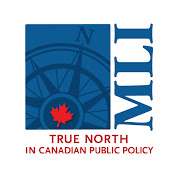Welcome to Lab 4 of our Machine Learning in General Chemistry series!
In this lab, we use Convolutional Neural Networks (CNNs) to analyze crystallographic images of 2D lattices and predict surface reactivity based on the number of edge sites. You’ll experiment with different CNN configurations, learn how machine learning can overcome the limitations of traditional crystallographic methods, and understand how surface defects impact reactivity. To setup the software needed for this lab please watch the following video. https://youtu.be/Jq3nUtLHWSU
Later this year, we will perform real machine learning experiments. You now know what to look for!
🔬 Lab Overview:
This lab focuses on the relationship between surface reactivity and the structure of 2D square lattices. Using CNNs, you’ll identify patterns in Fourier-transformed crystallographic images and make predictions about surface reactivity. By experimenting with different configurations of CNN layers and filters, you’ll learn how the architecture of machine learning models influences performance and how to balance accuracy with computational efficiency.
🌟 Key Takeaways:
Understanding surface reactivity and its relation to surface defects
Using CNNs for crystallographic image analysis
Comparing different CNN configurations (2, 3, and 4 layers)
Learning about overfitting and regularization techniques like dropout
Analyzing how model depth and filter size affect training time and accuracy
📚 Educational Value:
This lab explores the intersection of machine learning and chemistry, teaching you how CNNs can process complex datasets and predict important chemical properties like surface reactivity. You’ll gain valuable insights into the power and limitations of machine learning in scientific research.
💡 Hands-On Skills:
You’ll practice:
Configuring and training CNNs to predict surface reactivity
Analyzing residuals and prediction accuracy
Interpreting crystallographic images using machine learning
Exploring the trade-offs between model complexity, accuracy, and computational time
🔗 Useful Resources:
Course Website: Machine Learning in General Chemistry
Instructor’s Website: www.darinulness.com
Concordia College Chemistry Department: Concordia Chemistry
GitHub Repository: Machine Learning General Chemistry
👍 Stay Connected:
Enjoying the journey into machine learning and crystallography? Don’t forget to like, share, and subscribe! Your engagement helps us bring more educational content to life.
#MachineLearning #Crystallography #SurfaceReactivity #CNN #ConcordiaCollege #ChemistryEducation #GNLProject













